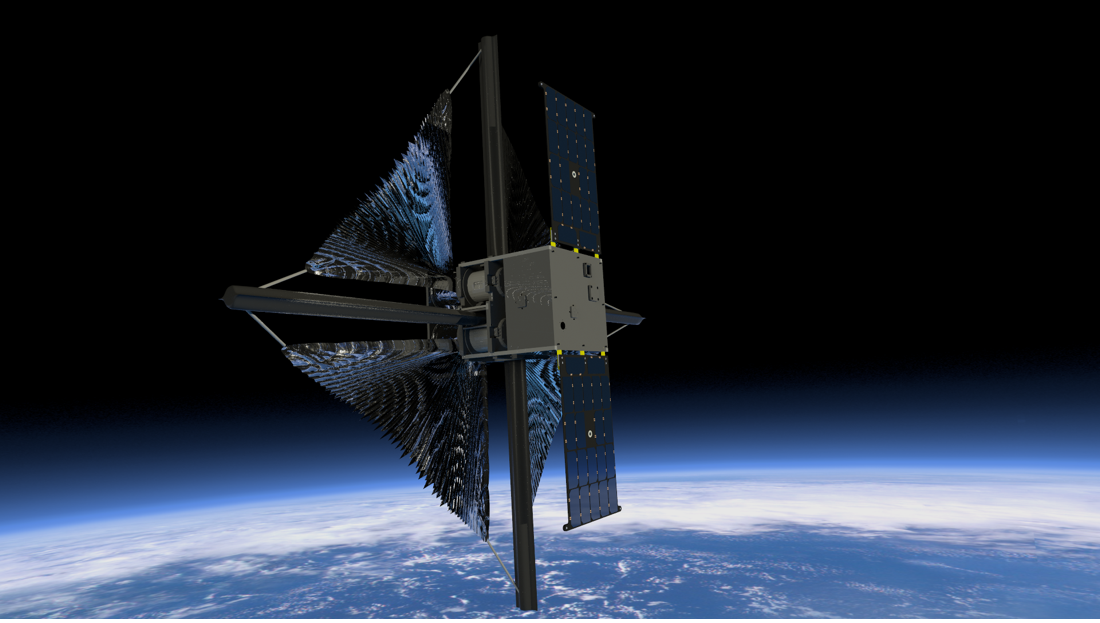
NASA says that it is testing its Advanced Composite Solar Sail System (ACS3) to see if larger-scale systems could be used for space applications.
The ACS3 uses solar sails to employ the pressure of sunlight for propulsion, eliminating the need for conventional rocket propellant. NASA says that it could be used for weather early warning satellites, near-Earth asteroid reconnaissance missions, or communications relays for crewed exploration missions.
Plans are for the system to be launched from a 23 cm x 23 cm x 34 cm spacecraft and deploy its solar power arrays. It can then begin unfurling its solar sail via four booms that span the diagonals of the square and unspool to reach 7 m (about 23 feet) in length. After approximately 20 or 30 minutes when the solar sail is fully deployed, the square-shaped solar sail measures approximately 9 m (about 30 feet) per side. Onboard digital cameras will obtain images of the sail during and after deployment in order to assess its shape and alignment. The ASC3 mission will also test a tape-spool boom extraction system designed to minimize jamming of the coiled booms during deployment.
According to NASA, the booms are made from flexible polymer reinforced with carbon fiber. This composite material can be rolled for compact stowage but remains strong and lightweight when unrolled. It is also very stiff and resistant to bending and warping due to changes in temperature, the space organization said. They are also 75% lighter and experience 100 times less in-space thermal distortion than previously flown metallic deployable booms. In future, the composite boom technology could be used to deploy solar sails up to 500 m2 (5,400 ft2), while follow-on composite boom technologies now in development could enable solar sails as large as 2,000 m2 (21,500 ft2).
Using sunlight to propel small spacecraft in lieu of consumable propellants offers more flexibility in spacecraft design, NASA said. The solar sails can operate indefinitely, limited only by the durability of the sail materials and spacecraft electronic systems.
This story uses material from NASA, with editorial changes made by Materials Today. The views expressed in this article do not necessarily represent those of Elsevier.





